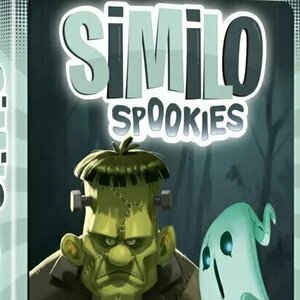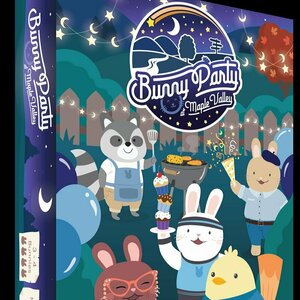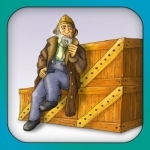
Le Havre (The Harbor)
Entertainment and Games
App
In this universal adaptation of the popular board game (winner of a 2009 International Gamers Award,...
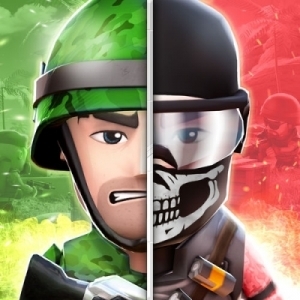
WarFriends: PvP Shooter Game
Games
App
Battle it out against friends and real-world opponents in WarFriends, the action packed real-time...

Live.me – Live Video Chat
Social Networking and Entertainment
App
Live.me is one of the top live broadcasting apps - Make new friends in your area and around the...
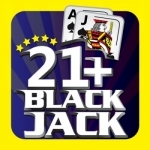
Blackjack 21 + Free Casino-style Blackjack game
Games and Entertainment
App
Get a casino quality Blackjack experience right on your iPhone, iPad, or iPod Touch! Download...

Rugby League Live 2: Gold Edition
Games and Sports
App
AN INTENSE RUGBY LEAGUE EXPERIENCE!!! The ultimate iPhone & iPad rugby league experience! Tru...
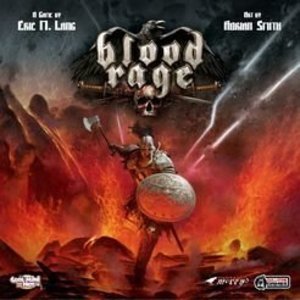
Blood Rage
Tabletop Game
"Life is Battle; Battle is Glory; Glory is ALL" In Blood Rage, each player controls their own...
Miniatures BoardGameGeekGreatness
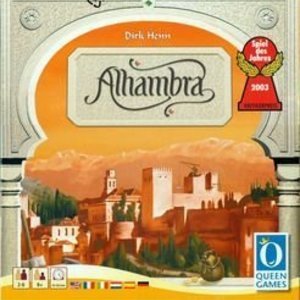
Alhambra
Tabletop Game
Granada, 1278. At the foot of the Sierra Nevada mountains, one of the most exciting and interesting...
Boardgames ModernClassics TonsofExpansions
Purple Phoenix Games (2266 KP) rated Mass Transit in Tabletop Games
May 13, 2021
Mass Transit is a cooperative, network building card game where players take on the roles of urban planners attempting to lay routes for commuters to head to and from work in the Big City. As the game is cooperative, all urban planners either win or lose together. But in either case, it’s the commuteeples (maybe?) that win or lose.
DISCLAIMER: We were provided a copy of this game for the purposes of this review. This is a retail copy of the game, so what you see in these photos is exactly what would be received in your box. I do not intend to cover every single rule included in the rulebook, but will describe the overall game flow and major rule set so that our readers may get a sense of how the game plays. For more in depth rules, you may purchase a copy online or from your FLGS. -T
To setup, assemble the Big City tiles to make a sweet hexagon. Each commuteeple (ok I think I’m not doing this one any longer) is placed on their worksite in the Big City. Shuffle the big deck of Mass Transit cards and deal each player four cards. The players choose a first player and the game may begin!
On a turn players will need to play at least two of their cards and can play up to all four if they wish. The choices of card play are to add it to a route line or discard it for movement. To add the card to the route line, players simply choose a route line and place the card at the end. This extends the route by one card. To finish a route, players will need to place the suburb card at the end of a line with the appropriate number of cards (some suburbs may show a 4, which means they can only be placed once four route cards have been placed in the same line).
The other way to play cards are to discard them for movement. Cards are discarded out of the game and used for the printed movement type. Green cards are walking, blue are ferry, gray are bus, red are train, and yellow are unavailable to use for movement. For example, a player could discard a green walk card in order to move the meeple one card closer to the suburb card, or could use a red train card in order to move the meeple from one train station icon to the next (which could actually move the meeple over several cards at once). There are some movement restrictions, such as the inability for meeples to simply jump out of a vehicle at a Traffic Stop in order to take an alternate movement type.
If the players can all work together (without expressly verbalizing strategy) and move all six meeples to their suburb homes before a player is unable to play two cards from their hands, they win! However, should a player be unable to play the required two cards from their hand and all meeples are not in their comfy homes, the players all lose together in sweet sadness.
Components. I absolutely love the interconnecting Big City tiles. They are just the right size, and even hold the draw deck. Speaking of the deck, the cards are all nice quality with slight linen finish and excellent graphic stylization. Mass Transit looks great on the table and when finished, looks like a funky subway map with little blue meeples. The meeples come with a sticker sheet, and while you can add your favorite stickers to one side of the meeple, we opted to just randomly add stickers to both sides and it works for us. I have zero issues with the components, and have come to expect that from Calliope Games titles.
All in all, this little game packs a great experience into about 15 or 20 minutes. What I really enjoy is trying to figure out the best usage for the cards in hand. Is it better to use the gray card to add to the route or to use it for fast travel (any Skyrim fans out there?)? To add to this thinkiness, the rules explicitly state that players are unable to discuss strategies, but can hint aloud at what they may be considering. So while this is not a silent game, players will need to carefully decide how best to communicate what they wish the party to accomplish without specifically stating such.
Mass Transit is a game that I can easily pull out and play with my 10-year-old twin niece and nephew, with other adults, or with harder gamers. When a small game can be so versatile, it certainly earns a place in my collection. If you are also looking for a small box game with a smallish table footprint and great presence, consider picking up a copy of Mass Transit. Purple Phoenix Games gives this one a blues travelin’ (hehe) 11 / 12. Pro tip: use the yellow cards early and for route addition only, as they cannot be used for movement. Also, stay away from alpha gamers, and they might not be able to handle the communication ban.
Purple Phoenix Games (2266 KP) rated Similo: Spookies in Tabletop Games
Mar 11, 2022
Similo: Spookies (which I will just call Similo from here on out, as they are all basically the same, but with different themes) is a party card game where one player knows information and attempts to persuade the other players to choose the correct character SILENTLY. One game lasts five rounds or less, and many times players will want to play multiple games in a row.
To setup, shuffle the deck of cards and place it face-down on the table. The player chosen to be the “Clue Giver” will then secretly look at the top card. This card will be the secret character for the entire game. Along with this card, the Clue Giver will draw an additional 11 cards and shuffle them. Next, lay out the 12 characters face-up in a 4×3 grid, so that all players can see. Finally, the Clue Giver draws another five cards to act as their starting hand of clues. The game may now begin in earnest!
The game lasts no more than five rounds, and each round is played mostly the same. During the first round the Clue Giver will place a card from their hand onto the table in either Portrait or Landscape mode (I know there are different words to describe these orientations, but they are failing me now). When a card is in Portrait mode, the Clue Giver is letting the players know that the secret character has similarities to the played card. Landscape placement means that the secret character has differences from the card played.
At the end of the first round, the other players must discuss and decide one card from the grid to remove from play, based on the Clue Giver’s information. If the card removed is the secret character (or at any time the secret character is removed in this way) the players all immediately lose the game. However, if the players have removed an appropriate character card, then the game moves to the second round. Each subsequent round is played exactly the same way, except the number of cards removed will match the round number being played. For example, during the third round three cards will be removed. The only exception here is the very last fifth round. During this round there will only be two cards remaining, and the players will need to choose the correct one to win the game. Win or lose, all players will most likely request to play another game with a different Clue Giver.
Components. This game is 30 cards in a tuckbox. The cards are all great quality with excellent linen finish. They each have the character’s name on the upper left corner and a small thematic quip on the lower right corner. The big thing here is the utterly amazing character art by Naiade (Seasons, Tokaido, Isla Dorada, etc). They are each so wonderfully illustrated, and they have to be, considering the entire game is based on the similarity or differences of each card. I was so very pleasantly surprised to see this beautiful set of cards pop out of the box when I opened it. Zero issues with components here.
This game is low-key a thinking person’s puzzle. How can I get the group to exclude one card specifically and throw away all the others? What the heck is this Clue Giver trying to tell us? What exactly is an Oni? With the right group of gamers, especially those that share many inside jokes and experiences, this could be a nightly hit. Now, determining the difference between Frankenstein’s Monster and a Zombie may be harder than you thought, so do be careful with those technicalities.
This one really reminds me of a much more compact version of Deception: Murder in Hong Kong. There is a silent Clue Giver in both trying to guide the other players to the right answer using cards. If I can get the same feeling from a game featuring 30 cards versus about 300 I might have a replacement situation on my hands here.
For its tiny table presence, excellent artwork, and overall game play, Purple Phoenix Games gives this one a bone-chilling 4 / 6. I know at this very second that my score is hanging in the balance. I want it to be a 5 so very badly, and I feel that it may actually get there, assuming I can play with larger groups of people and a variety of types of gamers. For now, I am happy with the 4 it is assigned. If you are like me and didn’t know you needed a smaller game in your collection that can give similo experiences to bigger boxes, give this one a shot.
Oh PS – You can also combine the different sets into a larger and more chaotic game. I’m not sure I have the huevos for that quite yet, but I think a good counterpart to this Halloween-themed set may be the Fables or Myths sets. Let me know if you have combined these two and if my hunch is correct. I’m going to go fanboy over Naiade’s art now.
Purple Phoenix Games (2266 KP) rated Bunny Party at Maple Valley in Tabletop Games
Oct 11, 2021
Bunny Party at Maple Valley (which I shall refer to as simply Bunny Party from here) is a sweet and cute little card game for three or four players. In it players are the titular bunnies decorating for and competing to win the chance to host the Night Sky Party at their place. However, in this game more often than not the victory is shared between they who amass the requisite five decorations and their neighbor who also co-hosts the event! The bunnies gotta get crackin’ so let’s get going!
PS – I will be reviewing the 3-player version of the game, which has ever-so-slightly different rules.
DISCLAIMER: We were provided a copy of this game for the purposes of this review. This is a retail copy of the game, so what you see in these photos is exactly what would be received in your box. I do not intend to cover every single rule included in the rulebook, but will describe the overall game flow and major rule set so that our readers may get a sense of how the game plays. For more in depth rules, you may purchase a copy online or from your FLGS. -T
To setup, character cards are shuffled and two dealt to each player. They choose one to be their avatar and discard the other back to the box. The large deck of cards with the house on the back is shuffled and placed on the table within reach. The villager cards are shuffled and one is drawn and placed outside the play area – it will not be used this round. The other five villagers are arranged as a market of friends. Each player draws three cards on the first round, and the game is ready to begin!
Bunny Party is played over a series of rounds until one player satisfies the win condition. Each round consists of eight phases: Turn Start, Tidy a Card, Villagers Visit, Play Cards, Trade, Play Cards (again), Party Start?, and Villagers Go Home. Turn Start typically involves players setting the table for the round. First, the villager cards are re-shuffled, one set aside to be ignored this round (they are staying home), and the remainders displayed. Then each player draws two cards from the deck and collects one Trade Token.
Next, all players will choose one of their cards they drew during the Tidy a Card step to be placed in a temporary discard pile face-down. Alternatively, a player may forego the Tidy in order to place a card in front of another player by spending one Trade Token. Once all players have tidied a card or placed one in front of another player, the Tidy pile is shuffled, then flipped as a stack to the top of the discard pile, face-up.
The villagers are now becoming impatient, so players will allow them audience during this Villagers Visit phase. Each player chooses a villager from those available to host during their party preparation. These villagers offer special abilities each round and can be very valuable at certain times during the game.
While the villagers are visiting, players may next Play Cards from their hand. These cards are typically of three types: Item, Event, or Decoration. Item cards are placed in the player’s tableau and offer one-time or lingering effects. Event cards are typically one-and-done cards to be completed and then discarded. Decorations are what players are really after, as they are what determine win conditions. With five star or moon cards the player can start the party and end the game. At the bottom of the decoration cards is printed an arrow. This arrow points to the neighbor that will co-host and also win the game. In a three-player game Decoration cards are displayed upside down, so that is why the photo below looks a little strange.
When players have all played their hand of cards, the Trade phase may begin. Players may offer Item cards to other players and a trade may be struck by each player discarding a Trade Token from their stash. This may result in a player receiving a new card to be played. When this happens, the next phase is immediately played (after all trades have been completed). Any player who now holds an unplayed card may Play Cards (again) as before.
If a player (or players) have now collected five or more star or moon Decoration cards, they may claim victory during this Party Start? phase. Again, the Decoration cards have arrows printed to determine the co-host/co-victor in the game, and the winners may then invite the rest of the burrow to their den for the Night Sky Party! However, if no victor emerges during the Party Start? phase, then all the Villagers Go Home, and a new round begins with the Turn Start phase.
Play continues in this fashion until winners have been crowned host and co-host of the Night Sky Party in Maple Valley!
Components. This one is a bunch of cards a few cardboard chits. The cards are all fine quality, as are the chits. What is really great about these components is the art on them. I cannot think of many cuter themes than uber-nice bunnies throwing a party and sharing their victory with a neighbor. So obviously the art has to match the theme, tone, and style of the game. I believe Bunny Party knocks it out of the park here. The art is so playful and cute, and I absolutely have to give a huge shout out to Evan’s Games for the very apparent inclusivity and representation. I see you and I applaud you!
Gameplay for me is where I take just a little issue. Everything works, and once you understand the phases it does flow better, but, I can see myself really only playing this with children or in a gateway/breaking in new gamers situation. It is very light, but there are eight phases to a round! So while each phase is easy to understand and execute, each round takes a little longer because there are a few too many steps. Once my kids really know how to read well they will be playing this with me and I know right now that we will have a great time with it. I really do appreciate the special efforts that were made with regards to representation (yes, even with anthropomorphic cartoon animals) and with the design being more focused on sharing victory and being nice to neighbors. My children will certain have good habits reinforced while playing this, and that is what makes this game important.
Again, this is not the game for hardcore gamers, nor those who are interested in bigger and more complex medium-weight games. This is a quick filler at best during a game night when newer gamers are gathered. That being said, I still find a great deal of value in this one, and will be keeping it for a long time. Purple Phoenix Games gives this one a 4 / 6 on stand-by. I do want to try this with different types of people (once we are able again) to see if my predictions are correct. I have only been able to play it with adult family, and none of them are medium to heavy weight game enthusiasts. If you are needing a nice game that can be played among other games for a themed game night (like Bunny Party + Bob Ross: Art of Chill + Hues and Cues + Escape: The Curse of the Temple) then this certainly fits that niche.
So my official stance, for now, is that Bunny Party has a great theme, excellent art, a wonderful message of harmony, but is both too light and too complex for what it is. I realize that sounds ridiculous. Please try it and let me know your thoughts. For now, I am keeping this close and I will be trying it with various groups with whom I game.

